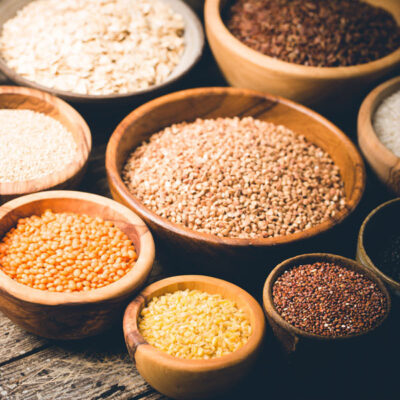Brands
The Benefits of Green Tea in Matcha and Kombucha
By: admin On: 20 November 2022

Green Tea Benefits. Why is green tea so much more beneficial to our health.
Matcha and kombucha both spring from the same source, and that is tea. Matcha is always made from green tea, whilst kombucha can be made from black or green tea, and they each retain the benefits of the tea from which they are made. PepTea products all begin with green tea, so read on to find out more about the unique benefits of this powerful plant.
What is green tea?
Green tea is a type of tea that is processed from the leaves of the tea plant (camellia sinensis). Its growing popularity is due to not only its nutritional content, but also its subtly sweet grassy flavours.
Where does green tea come from?
Although tea originates from China, and is native to East Asia with its tropical and subtropical climates, it is now grown in many parts of the world.
Of the native teas, China still produces most of the world's green tea. In Japan, green tea is the only tea produced commercially. Although modern mass production methods are responsible for most of it, there are many high quality teas produced by traditional methods. Japanese green tea is produced by gentle steaming, rather than the more aggressive pan-firing method, and this results in the sweet grassy flavours that it is known for. The world's most well known black teas, such as Assam and Darjeeling, come from India.
Are green tea and black tea the same?
Both black and green tea come from the same species of plant; the tea plant camellia sinensis. Most of the tea we drink comes from two varieties of tea plant; var.sinensis and var.assamica. Assam, for instance, comes from the variety var.assamica. Darjeeling, on the other hand, comes from var.sinensis. Green tea can be produced from either variety. Each variety also has hundreds of different cultivars, from which all of the world's teas are produced. This simply means that although they come from what is essentially the same plant, each variety and cultivar will have slight genetic differences that can result in vastly different teas. Just like fine wine, or great cheese, tea is a product of its environment. The soil, the climate, the plant type, the growing methods, and the processing, are all revealed in the final product.
The major difference between them lies in the processing. All tea begins as the freshly picked green leaves of the tea plant. There are generally three harvests of tea leaves known as a flush. The best tea is said to come from only the tips and first few leaves of the first flush which is in spring. Green and black tea both come from these young and tender green leaves.
Black tea is the product of oxidation. The leaves are left to wither and ferment, changing the colour from green to brown, and then black. The deep earthy flavour of black tea is the result of this process. The leaves for green tea are exposed to heat as soon as they are picked. This process stops the oxidation process, resulting in the green colour and fresh herbal flavours of green tea.
Does green tea have caffeine?
In general, black tea is considered to have more caffeine than green, which in turn is lower in caffeine than coffee. But that is not the whole story; as we have seen, tea comes in many many different forms, so there is no such thing as a 'standard'.
Caffeine in tea is the plant's natural defence against insects. Some sources suggest that leaves picked in the summer, when insect activity is at its highest, naturally contain higher levels of caffeine. Other factors affect the caffeine content of the fresh leaves; varietal, leaf type, processing, and exposure to sun, all have a part to play. The brewing process also has a lot to do with the final amount of caffeine in the cup. The more leaves you use, the longer you steep the leaves, and the hotter the water, the more caffeine you will extract into your brew.
Japanese teas in general are thought to contain more caffeine due to the gentle steaming process. Shade-grown teas, such as those used in the production of matcha, have more caffeine than tea grown in full sun. When you drink matcha tea, you are consuming the whole leaf, so none of the caffeine is left behind. There is also another side to caffeine in tea, and that's l-theanine.
L-theanine and caffeine
Tea, whether green or black, is as calming as it is energising. It offers the perfect pick-me-up, with none of the jitters or post-caffeine slump of coffee. This is due largely to the soothing effects of l-theanine. This compound, found in the tea plant, appears to work synergistically with caffeine, producing the unique feeling of wellbeing that comes with drinking tea. The shade-grown teas, as mentioned before, tend to have higher levels of l-theanine. Matcha in particular has high levels of l-theanine and caffeine, which together are responsible for its unique buzz.
How green tea is made
Green tea is grown, and processed, in a number of different ways that result in variable levels of nutrients and ultimately capture different nuances of flavour. Some are grown in full sunlight. These leaves are golden-green when plucked and have higher levels of catechins rather than theanine, which give the tea a more bitter flavour. Sencha tea, the most popular tea in Japan, is grown in full sunlight. Others are grown in the shade so that the rate of photosynthesis is reduced. This concentrates chlorophyll and increases level of l-theanine. These leaves are a deep green when plucked, and the resulting tea is sweet and mellow, with less bitter undertones.
The tea grown for matcha is grown in varying degrees of shade, depending on the grade of matcha produced. The more shade, the greener the leaf, and the higher the grade of matcha. The purest grade matcha is deep deep green, without a trace of bitterness. This article explains more about the different grades of matcha tea.
For all green tea, once plucked the leaves are steamed and dried, then kneaded before sorting. The kneading process breaks down the fibres so that maximum flavour and nutrients can be extracted during brewing.
Why is green tea bitter?
Not all green tea is bitter. As we explained in the previous section, it is grown either in the shade or in full sun. Shade-grown teas have higher levels of chlorophyll and theanine (and possibly caffeine) but teas grown in the sun develop more catechins and less theanine. These catechins are responsible for the bitter, astringent, notes found in some teas.
The benefits of green tea
Green tea contains many plant compounds that have been shown to be beneficial to our health.
Protective antioxidants
Protective polyphenols are the major active compounds. Polyphenols form a huge group of compounds found in plants, most of them with antioxidant properties. There are thousands of different types of polyphenols and these can be categorised into four groups, of which the flavonoids make up the largest. Catechins are part of this group.
The most potent, and possibly well known, catechin in green tea is EGCG (epigallocatechin-3-gallate). It is thought that EGCG protects against the cell damage caused by free radicals and can help fight chronic diseases such as diabetes, cardiovascular disease, and certain cancers. Also a powerful anti-inflammatory, EGCG may help to slow the rate of cognitive decline.
It is also rich in other beneficial flavonoid compounds such as quercetin and kaempferol.
Anti-ageing chlorophyll
Chlorophyll has all of the benefits we associate with greens. It has powerful anti-ageing properties and a detoxifying effect that helps to flush harmful toxins from the body.
Mood boosting l-theanine
L-theanine has been shown to have anti-anxiety properties and can aid relaxation.
Brain boosting caffeine
Caffeine can help to improve overall brain function, helping us to feel more alert with improved mood and a better memory.
Why not check out our matcha tea and our kombucha, and start enjoying the benefits today.






